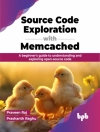Learn Linux, and take your career to the next level!
Linux Essentials, 2nd Edition provides a solid foundation of knowledge for anyone considering a career in information technology, for anyone new to the Linux operating system, and for anyone who is preparing to sit for the Linux Essentials Exam. Through this engaging resource, you can access key information in a learning-by-doing style. Hands-on tutorials and end-of-chapter exercises and review questions lead you in both learning and applying new information–information that will help you achieve your goals! With the experience provided in this compelling reference, you can sit down for the Linux Essentials Exam with confidence.
An open source operating system, Linux is a UNIX-based platform that is freely updated by developers. The nature of its development means that Linux is a low-cost and secure alternative to other operating systems, and is used in many different IT environments. Passing the Linux Essentials Exam prepares you to apply your knowledge regarding this operating system within the workforce.
* Access lessons that are organized by task, allowing you to quickly identify the topics you are looking for and navigate the comprehensive information presented by the book
* Discover the basics of the Linux operating system, including distributions, types of open source applications, freeware, licensing, operations, navigation, and more
* Explore command functions, including navigating the command line, turning commands into scripts, and more
* Identify and create user types, users, and groups
Linux Essentials, 2nd Edition is a critical resource for anyone starting a career in IT or anyone new to the Linux operating system.
Cuprins
Introduction xi
Chapter 1 Selecting an Operating System 1
What Is an OS? 1
Investigating User Interfaces 4
Where Does Linux Fit in the OS World? 8
What Is a Distribution? 13
Chapter 2 Understanding Software Licensing 21
Investigating Software Licenses 21
Looking at the Free Software Foundation 24
Looking at the Open Source Initiative 26
Looking at the Creative Commons 29
Using Open Source Licenses 30
Chapter 3 Investigating Linux’s Principles and Philosophy 35
Exploring Linux through the Ages 35
Using Open Source Software 38
Understanding OS Roles 41
Chapter 4 Using Common Linux Programs 47
Using a Linux Desktop Environment 47
Working with Productivity Software 55
Using Server Programs 62
Managing Programming Languages 68
Handling Software Packages 71
Chapter 5 Managing Hardware 75
Learning about Your CPU 75
Identifying Motherboard Capabilities 78
Sizing Your Power Supply 80
Understanding Disk Issues 81
Managing Displays 89
Handling USB Devices 93
Managing Drivers 94
Chapter 6 Getting to Know the Command Line 99
Starting a Command Line 99
Running Programs 104
Using Shell Features 107
Getting Help Using man Pages 110
Getting Help Using info Pages 117
Finding Additional Documentation 120
Chapter 7 Managing Files 127
Understanding Where Things Go 127
Navigating Files and Directories 133
Manipulating Files 137
Manipulating Directories 145
Chapter 8 Searching, Extracting, and Archiving Data 151
Using Regular Expressions 151
Searching for and Extracting Data 153
Redirecting Input and Output 161
Archiving Data 166
Chapter 9 Exploring Processes and Process Data 175
Understanding Package Management 175
Understanding the Process Hierarchy 181
Identifying Running Processes 182
Using Log Files 187
Chapter 10 Editing Files 193
Understanding the Role of Text Files 193
Choosing an Editor 195
Launching an Editor 196
Editing Files with pico or nano 198
Editing Files with vi 202
Chapter 11 Creating Scripts 211
Beginning a Shell Script 212
Using Commands 212
Using Arguments 215
Using Variables 216
Using Conditional Expressions 219
Using Loops 220
Using Functions 221
Setting the Script’s Exit Value 223
Chapter 12 Understanding Basic Security 227
Understanding Accounts 227
Using Account Tools 234
Working as root 237
Chapter 13 Creating Users and Groups 245
Creating New Accounts 245
Modifying Accounts 253
Deleting Accounts 259
Managing Groups 262
Chapter 14 Setting Ownership and Permissions 267
Setting Ownership 267
Setting Permissions 271
Using Special Permission Bits and File Features 278
Chapter 15 Managing Network Connections 285
Understanding Network Features 285
Configuring a Network Connection 287
Testing Your Network Connection 299
Protecting Your System from the Bad Guys 303
Appendix A Answers to Review Questions 307
Appendix B LPI ‘s Certification Program 327
Index 331
Despre autor
About the Authors
Christine Bresnahan has worked in the IT industry for more than 30 years and is currently an adjunct professor of Python programming and Linux system administration classes at Ivy Tech Community College in Indianapolis. She is coauthor of Linux Bible, 8th Edition, and Linux Command Line and Shell Scripting Bible. Richard Blum has more than 25 years as a network and systems administrator, currently managing Microsoft, Unix, Linux, and Novell servers for a network with more than 3, 500 users. He has developed online programming and Linux courses that he teaches to students worldwide.












